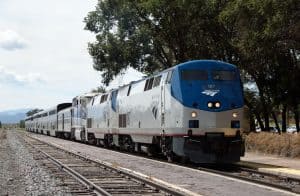Fatal South Carolina Train Crash Brings New Challenges for Amtrak
 On Sunday, February 4, an Amtrak passenger train collided with a parked freight train in Cayce, South Carolina, killing two people and injuring over 100 passengers. This is just the latest in a string of accidents for Amtrak: three incidents in the last three months alone.
On Sunday, February 4, an Amtrak passenger train collided with a parked freight train in Cayce, South Carolina, killing two people and injuring over 100 passengers. This is just the latest in a string of accidents for Amtrak: three incidents in the last three months alone.
In December, a train derailed near Tacoma, Washington, killing three people and injuring dozens. Then, at the end of January, a train carrying Republican lawmakers to a retreat struck a garbage truck near Charlottesville, Virginia, killing the driver.
What do we know so far? As of this writing no official report has been released—a National Transportation Safety Board report could take months or even years—but we do know a few things about the train accident. Investigators have honed in on one factor: a manually set switch that may have caused the passenger train to go down the wrong track. CSX Transportation owned and operated those tracks, and was responsible for the switches. Amtrak has been swift to point that out CSX employees had moved the switch in order to park the train on the side track after unloading its freight of 34 train cars of automobiles. The switch was padlocked as it was supposed to be. However, the system operating the train signals in the area was down, so dispatchers were operating them manually. It’s unknown if the signal was red to let the Amtrak conductor know that the switch was not set to continue on the main track.
Positive train control (PTC)
At the heart of train accident incidents are discussions about positive train control (PTC). PTC is a failsafe technology system designed to prevent excessive speed, avoid collisions, and make up for other human errors. It uses a GPS-based system which knows the location of all trains and the positions of all switches in a certain area and is designed to prevent two trains from traveling on the same track at the same time.
In 2008, Congress mandated that every railroad put PTC in place by the end of 2015. However, railroad operators said they could not meet that deadline and threatened to shut down rail service, and the deadline was extended until the end of 2018.
That deadline is quickly approaching.
According to an article in The Atlantic, PTC was not in action at the time of the crash in South Carolina. National Transportation Board Safety (NTSB) Chair Robert Sumwalt said, “Fully operational Positive Train Control could have avoided this accident.” Amtrak does not own the track where the crash occurred; rather a company called CSX Corp. does, who have not admitted any blame for the accident. They are working with federal investigators.
If you or a loved one has been injured in a railway accident, you may be entitled to substantial compensation. The experienced Chicago train accident lawyers at Gainsberg Injury and Accident Lawyers will fight on your behalf in the face of powerful insurance companies and their legal resources. We work tirelessly to help you obtain justice and the monetary resources you need for your recovery. We invite you to get in touch with our legal team through our contact form, or by calling 312.548.9019 today.

Attorney Neal Gainsberg has spent the last 20+ years fighting to protect the rights of the injured in Chicago and throughout Illinois. For dedicated legal help with a personal injury, car accident, or wrongful death matter, contact Gainsberg Injury and Accident Lawyers in Chicago for a free consultation.
